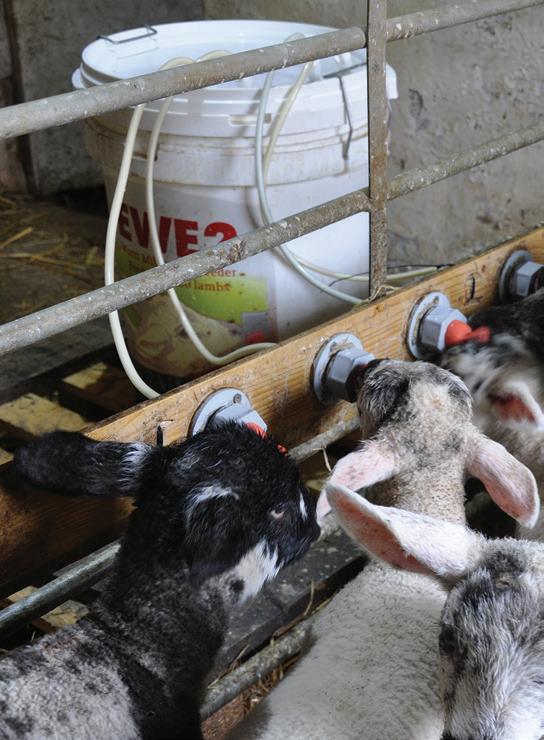
2 minute read
Profit from your surplus lambs in 2023 sheep
With UK lamb prices expected to mirror the trend of the last couple of years and remain firm into 2023 due to low domestic supply against solid demand within the EU1, sheep industry commentators believe it will pay Scottish farmers to rear as many healthy lambs as possible come lambing time.
Alan Smith – Volac business manager for Scotland – says that each year every flock will have some lambs that either need to be adopted onto another ewe or be reared off another mother. But deciding which rearing route to take will depend on the availability of a suitable foster mother and the physical condition of the lamb.
Advertisement
“Cross fostering will only be successful if the lamb is fit and healthy, has had adequate colostrum, and is fostered onto a healthy ewe with plenty of milk and good maternal instincts,” he explains.
“However, surplus lambs can be reared very effectively and without all the inherent practical problems of fostering onto an unwilling ewe. With good husbandry, organisation and Lamlac ewe milk replacer, there’s no doubt you can produce good quality lambs to sell in 2023 alongside those reared on any ewe, as well as save hours of effort and hassle.”
How
To
rear
surplus lambs:
Choose your feeding system. There are three main options available: bottle feeding, which is very time consuming; or a variety of laboursaving options – for example, ad lib feeding of surplus lambs via a thermostatically controlled milk bucket feeder (such as the Volac Ewe2) or machine feeding using a computerised feeder. The method you choose will often depend on the number of lambs you are rearing and the facilities that you have available.
Ensure all newborn lambs receive adequate colostrum within six hours of birth.
Choose a proven ewe milk replacer. According to the most recent Volac surplus lamb rearing survey (Dec 2021), 95% of sheep farmers say it is important to see positive independent feeding trial data highlighting the performance of proprietary ewe milk replacer products. For example, specially formulated, trial-proven ewe milk replacer such as Lamlac can be mixed cold and is designed to be a complete diet providing the lamb with all the energy and nutrients it needs. Feeding enough Lamlac alongside fresh water, roughage and small amounts of a good quality creep feed refreshed daily is the key to healthy, profitable growth. A single lamb reared artificially to weaning (at an average of 35 days of age) will require a minimum of 9.5kg of Lamlac (equating to 47.5 litres of reconstituted ewe milk replacer).
Ad-lib feeding of surplus lambs
Alan Smith explains that with ad lib feeding, milk replacer is fed using a teated bucket such as the Volac Ewe2 (for up to 20 lambs) or the Ewe2 Plus (for up to 40 lambs).
“These bucket feeders are thermostatically controlled. We recommend that newborn lambs be started on milk at 30°C, but once they are trained and drinking well the temperature can be reduced to 18-20°C. The amount of milk replacer used is approximately 11-12kg per lamb. The Ewe2 and Ewe2 Plus bucket feeders sit outside the lamb rearing pen, ensuring optimum safety and avoiding wasteful spillages.”
He suggests starting lambs on restricted warm milk until trained (1 litre spilt into four or five 200-250ml feeds per day).
“Training normally takes 1-3 days, after which time you can allow your lambs ad lib access to milk.”
Using a computerised feeder Alternatively, using an automatic computerised feeder such as the Volac ECO Feeder can dramatically cut the time spent mixing milk and feeding lambs.
“However, a high level of management and hygiene is essential,” stresses Mr Smith.
“With computerised feeders, milk is consumed little and often, which means faster lamb growth rates and less risk of digestive upsets. The amount of ewe milk replacer used is approximately 12-13kg per lamb. Milk may be offered warm (39°C) on a restricted basis during the early training period, but once lambs are sucking well from the teat on an ad lib basis the milk temperature should be reduced to 18-20°C to reduce the risk of health problems caused by over consumption. The machine should be cleaned daily and calibrated at least once a week, and between batches of milk powder,” he advises.








